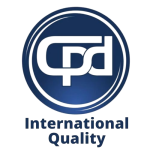Quick Overview
Activity accreditation is formal recognition that an organisation meets established standards of quality and best practice. It helps organisations demonstrate credibility, ensure compliance, and foster continuous improvement.
This blog will cover:
✅ Understanding accreditation requirements and identifying relevant standards.
✅ Conducting a gap analysis to identify areas for improvement.
✅ Forming an accreditation team and developing clear policies and procedures.
✅ Implementing staff training and gathering evidence of compliance.
✅ Conducting internal audits, preparing for accreditation visits, and responding to feedback.
✅ Maintaining accreditation through ongoing compliance and continuous improvement.
Activity accreditation is a formal recognition of an organisation’s compliance with established standards and best practices. It is important for organisations because it builds credibility, assures quality, and supports continuous improvement. This guide describes how organisations can reach and maintain standards in their activities through accreditation. This step-by-step process will help you achieve your goals.
Understand Activity Accreditation Requirements
The first step on the road to accreditation is to understand accreditation requirements. First, do some research on the accreditation body responsible for the standards that apply to your field or industry. Study the agency’s history, reputation, and specific requirements. Each accreditation body holds different standards and operates under different processes.
Once you have identified the accreditation body and obtained all the relevant documents that describe the accreditation criteria and standards, the details vary with each accreditation body; accreditation can be a top-down process whereby an organisation requires an activity to have specific practices, policies, and procedures in place in order to gain accreditation. A typical accreditation document will provide detailed descriptions of what those practices, policies, and procedures must look like. Carefully review those materials. Highlight any sections in the material that describe your activity in detail.
Then, identify the particular requirements to the activity you are undertaking. Not every guideline will apply to every organisation, so identify what is directly relevant to what you are doing. This might require discussions with people at an accreditation body to clarify ambiguous points or to check what is meant so that you can be satisfied with what is required.

Conduct a Gap Analysis
Once you have a good grasp of the accreditation standards, the next step is to perform a gap analysis, which is a detailed comparison of what you currently do versus the standards of the accreditation body. Start by documenting your current processes, policies and procedures. The documentation should be granular, capturing every aspect of your business that relates to the accreditation standards.
Once you have your baseline map of your current practices, you can methodically compare these to the accreditation standards. Where do you find a gap between what you do and what the standards require? Those are the areas you’ll need to address and improve upon when you go for accreditation.
Having identified your gaps, outline a step-by-step plan for addressing them. That plan should include the specific actions needed to bring your practice into conformity with the accreditation standards, along with timelines, responsibilities, and resources required for each. It should be one that you are confident you can achieve, with clear milestones along the way.

Form an Accreditation Team
Accreditation is a team effort. Get the right team with the right expertise and experience. Start with a core team of faculty, administrators, and staff who have the necessary expertise and experience to guide your institution in areas that need improvement. Also consider including members from all the departments that will be involved in the accreditation process to establish a comprehensive strategy to meet accreditation standards.
Once the team is in place, be clear about everyone’s roles and responsibilities. Divide up the tasks according to the team’s collective strengths and individual expertise. Make sure that everyone understands their role and why they’re part of the process.
It’s key to developing a project timeline for maintaining the accreditation process. Create a very formal timeline for your accreditation program, including all the stages from the gap analysis to the final accreditation review. Include deadlines for each step and milestones that can be reviewed periodically and modified as needed. Make sure that the timeline is realistic and reasonable in light of any potential challenges and delays.
Develop and Document Policies and Procedures
The next step in the accreditation process is creating the policies and procedures needed to satisfy the standards. Do this by going back to your analysis and looking for gaps or areas that need to be addressed. Then, policies will be developed to satisfy the accreditation standard. Accreditation standards often call for consistent procedures across all activities within an organisation, so be sure to include this in your policies.

Once the policies have been developed, document the procedures for the related tasks. The procedures should be comprehensive, and the steps required for completing each task should be detailed. The procedures should be clearly written and presented using simple and concise wording for all staff to read and comprehend them easily. All relevant forms, templates, checklists, and the like should be included in the document.
Make sure everything is written down and accessible. Keep the documents in a central place – a shared drive or a policy management system that everyone needs to use. Review them regularly and update them as policies or procedures change. Make sure staff know where to go for the most recent versions.
Implement Training Programs
After the policies and procedures are in place, the next step is to create training programs to ensure that your staff know how to meet the standards. Start with training materials that provide the details of the new policies and procedures. Your training materials can take different forms: presentations, manuals, e-learning, and hands-on.
Planned and conducted structured training sessions for staff on the new policies and procedures. Engage in regular training sessions to reinforce compliance with the policies and procedures, as well as to answer questions that arise. Staff members must receive training on the updated policies and procedures that apply to their particular role in relation to the full spectrum of the organisation’s activities.
Solicit feedback from your employees regarding the efficacy of your training programmes and make any appropriate changes. Periodically update your training materials as the university adopts new policies, procedures, or guidelines. Provide refresher courses to maintain accreditation compliance. When you encourage your staff to keep learning, you’re not only helping them maintain their knowledge of changing accreditation standards but also helping them thrive on your institution’s campus.

Gather and Organise Evidence
Collecting and documenting evidence of compliance is an important step in the accreditation process. Collect all documentation and other evidence that indicates your organisation’s compliance with the accreditation standards. Evidence can include policy manuals, procedure manuals, training records, meeting minutes, audit reports, etc.
Create a filing system for the evidence so that it is easily accessible for review. The filing system can be physical (such as cabinets and folders), digital (such as document management systems), or a combination of both. The most important thing is to ensure that all of the evidence is organised in a systematic, logical manner so that it can be easily accessed and retrieved when needed.
Make sure that it is readily available for internal and external review. Audit your evidence on a regular basis to ensure that it is complete and up to date. A structured database of your evidence not only makes accreditation review a snap but also concretely demonstrates to staff, management, clients, and the public that you value quality and compliance.
Conduct Internal Audits
Internal audits are an important part of maintaining ongoing compliance with accreditation standards. Start by creating an audit plan that describes the scope, objectives and schedule of the internal audits. Choose an audit team with members who are familiar with the standards and have the skills to evaluate the work objectively.
Perform internal audits by reviewing documentation, processes, and practices for adherence to established standards. Use checklists and audit tools to guide the review process while engaging staff to understand their roles and verify documented practices.
Prepare an audit report with the findings and areas of non-compliance or opportunities for improvement and, accordingly, provide recommendations. Prioritise the findings based on their impact on the organisation’s compliance and effectiveness. Follow up on allocated actions for correction and track the action closure.

Prepare for the Accreditation Visit
Being well-prepared for the accreditation visit is almost as important as the accreditation itself. Review all your documentation and evidence to ensure it is complete, correct, and current. This includes policies and procedures, training records, audit reports, and anything else.
Engage in mock accreditation visits to mimic the review process. This will allow you to identify any perceived gaps or potential problems before the real visit. Staff members can also participate in the mock visits, so they know how the process works and what to expect in their roles and responsibilities.
Once identified, respond to any issues raised during mock visits in a timely manner. For example, records, processes or practices can be modified to align them completely with accreditation standards. Utilise mock visit feedback to refine your preparation and increase your organisation’s readiness.
Host the Accreditation Visit
On the day of the visit for accreditation, make sure all staff are prepared and available to participate in the visit. Communicate the schedule and expectations to all who will be participating, and make sure key personnel are prepared to answer questions and provide information.
Make the evaluators feel welcome by creating a welcoming and organised space for them. Arrange all documentation and evidence in a way that is easily accessible and ready. Have a room or space set up where the evaluators can go to review documents and interview staff members.
Help the evaluators review your organisation by walking them through the policies, processes, and documentation. Respond to their questions. Provide clear, concise information. Demonstrate your organisation’s commitment to quality and compliance by showing your policies, procedures, and practices.

Address Feedback and Maintain Accreditation
Once the accreditation visit is completed, review the evaluators’ comments and determine what changes or improvements are necessary to satisfy the accreditation body’s requirements. Create an action plan for the areas recommended by the evaluators and delegate responsibilities for making the necessary changes.
Make the necessary alterations and monitor continued adherence to the accreditation standards: Review and revise policies, procedures, and practices as needed to keep them relevant and effective, and regularly check them against the standards. Periodically audit your own practices to ensure compliance and make every effort to improve where needed.
Conclusion
Achieving activity accreditation is a long-term commitment to a series of detailed steps – understanding the requirements, conducting a gap analysis, forming a team, creating policies and training activities, documenting your activities, conducting audits, preparing for the visit, hosting the visitors, and maintaining compliance. Each is essential for your organisation to be compliant and improve.
Continuous compliance and continuous improvement are the key. Do not think of accreditation as a one-time event but rather as a continuous journey to improving quality and operational excellence.

